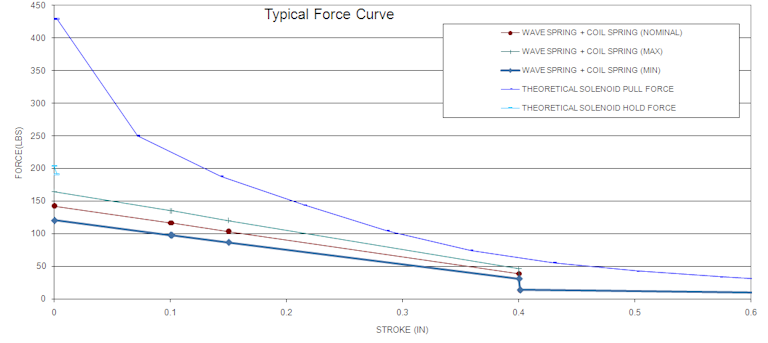Designing the proper solenoid actuator to meet a specific application involves more than just gathering information on required force, stroke, and voltage. While these characteristics are certainly the most important, information such as ambient temperatures, environmental conditions, and required mechanical life are also necessary for determining suitable performance parameters.
A critical factor to consider when designing a reliable solenoid actuator is the force vs. stroke performance of the solenoid. Force generation is a function of power input. However, the length of the stroke also plays a critical role. The solenoids shown in Figure 1 each have the same ending hold force once completely energized. The larger solenoid’s stroke is 25mm vs. 3mm for the smaller unit. To achieve the same pull force across the longer stroke, the solenoid’s size must be increased to compensate. It may be possible, within certain limits, to maintain the size of the solenoid by increasing the power input to get the same force over the longer stroke. However, this can lead to excessive heat generation and increased cost due to the need for higher power electronic controls.


